M
I
C
R
O
S
T
O
R
Y
O
F
A
R
T
........................................................

NOW COMPLETED:

........................................................
MICROSTORY OF ART
ONLINE JOURNAL FOR ART, CONNOISSEURSHIP
AND CULTURAL JOURNALISM
........................................................
INDEX | PINBOARD | MICROSTORIES |
FEATURES | SPECIAL EDITIONS |
HISTORY AND THEORY OF ATTRIBUTION |
ETHNOGRAPHY OF CONNOISSEURSHIP |
SEARCH

........................................................



 >MICROSTORIES
>MICROSTORIES
- Richard Serra
- Martin Scorsese
- Claude Simon
- Sunshine
- Werner Herzog
- The Creation
- Marcel Duchamp
- Nino Rota
- Wölfflin and Woolf
- Hansjörg Schneider
- Kraftort Arkadien
- Visual Biography
- Schlaraffenleben
- Die Geisteswissenschaften
- The Voyeur
- Buzzword Sustainability
- Paul Verlaine
- Tao Yuanming
- New Beginning
- Seneca
- Still Lifes
- Charles Baudelaire
- Frédéric Chopin
- The Art History of Sustainability
- Wang Wei
- Solarpunk
- Historians of Light
- Lepanto
- Renaturalization
- Plates
- Snow in Provence
- Learning to See
- Picasso Dictionaries
- Peach Blossom Spring
- Picasso Tourism
- Tipping Points
- Sviatoslav Richter
- Weather Reports
- Treasure Hunt
- Another Snowscape in Picasso
- Picasso in 2023
- Dragon Veins
- The Gloomy Day
- The Art of the Pentimento
- Reforestation
- The Status of Painting
- Emergency Supply
- Punctuality
- Watching Traffic
- Zhong Kui
- How Painting Survived the 1990s
- Confirmation Bias
- Sustainability and Luxury
- Garage Bands
- Picasso and Artificial Intelligence
- Eyes of Tomorrow
- Picasso in 2023 2
- Gluing Oneself to Something
- Suburbia
- Bamboo
- Sustainability and Carpe Diem 1
- Interviews with Bruegel
- Sustainability and Carpe Diem 2
- Coffee & Sugar
- Bamboo 2
- Picasso in 2023 3
- Sustainability and Carpe Diem 3
- Cherry Orchard
- Old Magazines
- Chance
- Nick Drake
- Harlequin
- The Smartphone & the Art Book
- Atlas Syndrome
- The Kitchen
- Atlas Syndrome 2
- Consideration
- Tori Amos
- School
- Orchard Auctioning Day
- The Hundred Years’ War
- Sócrates
- Chameleon
- Nefertiti Bust
- Picasso as a Computer
- Sunflowers
- Philemon & Baucis
- Ode to the Radio
- Childhood
- Wimmelbild
- Restitution
- Nick Drake 2
- Wishful Thinking
- Sundays
- The Independent Scholar
- September
- The Fisherman by Pirosmani
- Microadventure
- Sociology
- Salvator Mundi
- Chillon
- Appassionata
- Amber
- Homer
- Berlin
- Planet Walk
- Improvisation
- Seeing Picasso
- These Nice Kids
- Robber
- The One
- The Sea Turtle
- Zoo
- Through the Hush
- Wunderkammer
- I Do Not Seek, I Find
- Shopping Mall
- Food Hamper
- The Secretary
- This Gate
- Nor Rainy Day
- House on a Hill
- Beautiful Island
- Second-hand Bookstore
- Flat
- Slap in the Face
- Serra, Wenkenpark
- Apologies
- The Bells
- Nordmann Fir
- Picasso Wanting To Be Poor
- Picasso, Pirosmani
- A Brief History of Sculpture
- 24 Sunsets
- Rusty Phoenix
- Glove
- Wintry Stanza
- A Song
- Like A Beatle
- Catching An Orange
- Solar Bees
- Permaculture

 >FEATURES
>FEATURES
- Van Gogh On Connoisseurship
- Two Museum’s Men
- Ende Pintrix and the City in Flames
- Titian, Leonardo and the Blue Hour
- The Man with the Golden Helmet: a documentation
- Un Jury d’admission à l’expertise
- Learning to See in Hitler’s Munich
- Leonardo da Vinci and Switzerland
- The Blue Hour Continued
- The Blue Hour in Louis Malle
- Kafka in the Blue Hour
- Blue Matisse
- Blue Hours of Hamburg and LA
- A Brief History of the Cranberry
- The Other Liberale in the House
- The Blue Hour in Raphael
- Who Did Invent the Blue Hour?
- Monet on Sustainability
- Velázquez and Sustainability
- The Blue Hour in Guillaume Apollinaire
- Van Gogh on Sustainability
- The Blue Hour in Marcel Proust
- Picasso and Sustainability
- The Contemporary Blue Hour
- The Blue Hour in 1492
- The Blue Hour in Hopper and Rothko
- Hopper and Sustainability
- The Blue Hour in Ecotopia
- The Hour Blue in Joan Mitchell
- Explaining the Twilight
- The Twilight of Thaw
- The Blue Hour in Pierre Bonnard
- Explaining the Twilight 2
- Picasso on Stalin
- Rubens on Sustainability
- The Salvator Mundi in Bruegel and Rubens
- The Blue Hour in Leonardo da Vinci and Poussin
- The Blue Hour in Rimbaud
- Faking the Dawn
- Frost and Thaw in Ilya Ehrenburg
- Picasso, Stalin, Beria
- Picasso, Solzhenitsyn and the Gulag
- Shostakovich on Picasso
- Hélène Parmelin in 1956
- Historians of Picasso Blue
- Picasso Travelling to Moscow 1
- The Blue Hour in Caravaggio
- Picasso Travelling to Moscow 2
- Picasso, the Knife Game and the Unsettling in Art
- Some Notes on Leonardo da Vinci and Slavery
- Picasso Moving to the Swiss Goldcoast
- The Blue Hour in Camus
- The Blue Hour in Symbolism and Surrealism
- Caspar David Friedrich in His Element
- Exhibiting the Northern Light
- Caspar David Friedrich in His Element 2
- Robert Schumann and the History of the Nocturne
- The Blue Hour in Robert Schumann
- Caspar David Friedrich and Sustainability
- The Twilight of Thaw 2
- Multicultural Twilight
- The Blue Hour in Anton Chekhov
- The Blue Hour in Medieval Art
- Twilight Photography
- The Blue Hour in Bob Dylan
- Iconography of Optimism

 >SPECIAL EDITIONS
>SPECIAL EDITIONS
- Visions of Cosmopolis
- Mona Lisa Landscapes
- Turner and Ruskin at Rheinfelden
- Painters On TV & On TV
- Spazzacamini in Art
- A Last Glance at Le Jardin de Daubigny
- The Experimental Cicerone
- A Dictionary of Imaginary Art Historical Works
- Iconography of Blogging
- Begegnung auf dem Münsterplatz
- Cecom
- Das Projekt Visual Apprenticeship
- Those Who See More
- A Fox on Seeing with the Heart
- Sammlung Werner Weisbach
- Daubigny Revisited
- Some Salvator Mundi Microstories
- Some Salvator Mundi Afterthougths
- Some Salvator Mundi Variations
- Some Salvator Mundi Revisions
- A Salvator Mundi Questionnaire
- A Salvator Mundi Puzzle
- Unknown Melzi
- Francis I and the Crown of Charlemagne
- From Amboise to Fontainebleau
- Drones Above Chambord
- Looking Back At Conques
- Flaubert At Fontainebleau
- Images of Imperial Ideology
- The Chronicles of Santa Maria delle Grazie
- Seeing Right Through Someone
- Melzi the Secretary
- Eying Glass
- A Foil to the Mona Lisa
- A Renaissance of the Cartoon
- Sketching a Family Tree
- Venetian Variations
- A Brief History of Digital Restoring
- A Consortium of Painters
- Leonardeschi and Landscape
- A Christ in Profile
- Learning to See in Spanish Milan
- A History of Gestures
- Leonardo and Josquin
- A Renaissance of the Hybrid
- Suida and Heydenreich
- The Watershed
- Three Veils
- From Beginning to End
- Connoisseurship of AI
- Twilight and Enlightenment
- The Blue Hour in Chinese Painting
- Dusk and Dawn at La Californie
- Iconography of Sustainability
- The Blue Hour in Goethe and Stendhal
- The Sky in Verlaine
- The Blue Hour in Paul Klee
- Iconography of Sustainability 2
- The Blue Hour in Charles Baudelaire
- From Bruegel to Solarpunk
- Some Salvator Mundi Documentaries
- Some More Salvator Mundi Monkey Business
- The Windsor Sleeve
- Brigitte Bardot’s Encounter with Picasso
- Art Historians and Historians
- A Salvator Mundi Chronicle
- The Salvator Mundi and the French Revolution
- The Fontainebleau Group
- The Encounter of Harry Truman with Pablo Picasso
- The Fontainebleau Group Continued
- The Windsor Sleeve Continued
- The Salvator Mundi in Early Netherlandish Painting 1
- Some Salvator Mundi Resources
- A New Salvator Mundi Questionnaire
- The Woman in Picasso
- The Yarborough Group
- Melzi, Figino and the Mona Lisa
- The Yarborough Group Continued
- A Salvator Mundi Global History
- The Salvator Mundi in Medieval Art
- The Salvator Mundi in Medieval Art 2
- The Salvator Mundi in Early Netherlandish Painting 2


 >HISTORY AND THEORY OF ATTRIBUTION
>HISTORY AND THEORY OF ATTRIBUTION
- The Mysterious »Donna Laura Minghetti-Leonardo«
- Assorted Demons of Connoisseurship
- Panofsky Meets Morelli
- Discovering the Eye of Sherlock Holmes
- Handling the Left-handed Hatchings Argument
- Visual History of Connoisseurship
- Alexander Perrig
- Connoisseurship in 2666
- What Postmodernity Has Done to Connoisseurship
- Dividing Four Fab Hands
- A Leonardesque Ambassador
- Test Cases in Connoisseurship
- A Raphael Expertise
- How to Tell Titian from Giorgione
- Louise Richter
- The Unique Property in the History of Connoisseurship
- An Expertise by Berenson
- The Book of Expertises
- An Album of Expertises
- An Expertise by Friedländer
- A Salvator Mundi Provenance
- How to Tell Leonardo from Luini
- An Expertise by Crowe and Cavalcaselle
- An Expertise by Bayersdorfer
- An Expertise by Hermann Voss
- An Expertise by Hofstede de Groot
- Leonardeschi Gold Rush
- An Unknown »Vermeer«
- An Expertise by Roberto Longhi
- An Expertise by Federico Zeri
- A Salvator Mundi Geography
- A Salvator Mundi Atlas
- The Bias of Superficiality
- 32 Ways of Looking at a Puzzle
- James Cahill versus Zhang Daqian
- Five Fallacies in Attribution
- On Why Art History Cannot Be Outsourced to Art Dealers
- On Why Artificial Intelligence Has No Place in Connoisseurship
- Salvator Mundi Scholarship in 2016
- Leonardo da Vinci at the Courts
- The Story of the Lost Axe
- The Last Bruegel
- A Titian Questionnaire
- On Where and Why the Salvator Mundi Authentication Did Fail
- The Problem of Deattribution

 >ETHNOGRAPHY OF CONNOISSEURSHIP
>ETHNOGRAPHY OF CONNOISSEURSHIP
MICROSTORY OF ART
ONLINE JOURNAL FOR ART, CONNOISSEURSHIP
AND CULTURAL JOURNALISM
........................................................

***
ARCHIVE AND FURTHER PROJECTS

1) PRINT


***
2) E-PRODUCTIONS


........................................................

........................................................

........................................................
FORTHCOMING:


***
3) VARIA

........................................................

........................................................

........................................................

........................................................

........................................................
***
THE GIOVANNI MORELLI MONOGRAPH

- The Giovanni Morelli Monograph
........................................................
MICROSTORY OF ART
ONLINE JOURNAL FOR ART, CONNOISSEURSHIP AND CULTURAL JOURNALISM
HOME
| MICROSTORY OF ART ONLINE JOURNAL FOR ART, CONNOISSEURSHIP AND CULTURAL JOURNALISM Titian, Leonardo and the Blue Hour |
At the Lucerne Festival of this summer (http://en.wikipedia.org/wiki/Lucerne_Festival) the German writer Martin Mosebach (http://en.wikipedia.org/wiki/Martin_Mosebach) has given a lecture on the subject of the human soul (in a shortened version this text has also recently been published in the Neue Zürcher Zeitung: http://www.nzz.ch/feuilleton/die-seele-1.18377891). One ingredient of this lecture has been a contemplating and interpreting of Titian’s painting, commonly known as Sacred and Profane Love, and one detail of the writer’s description of that painting particularly aroused my attention. Because Mosebach referred to the time of day, respectively night, that the painter translated into an image as the blue hour. And this might be our point of departure of shedding some light onto the cultural history of twilight.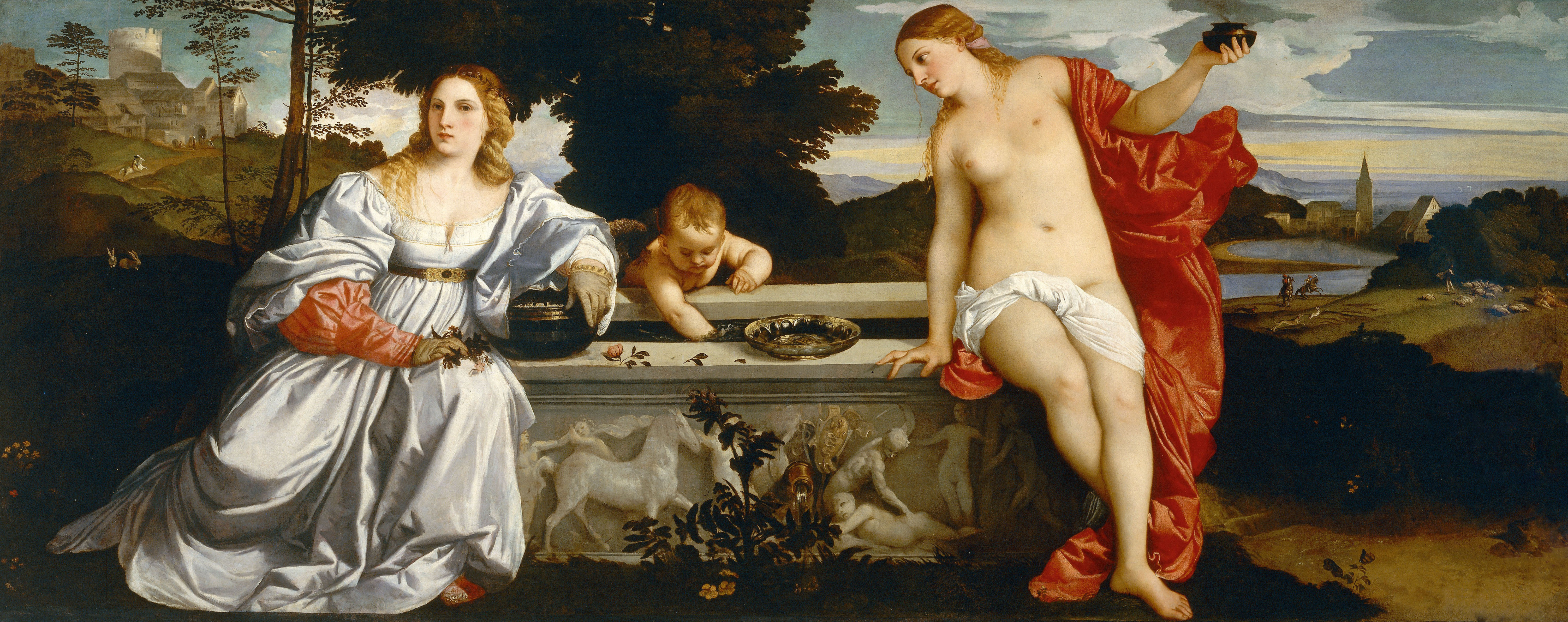 |
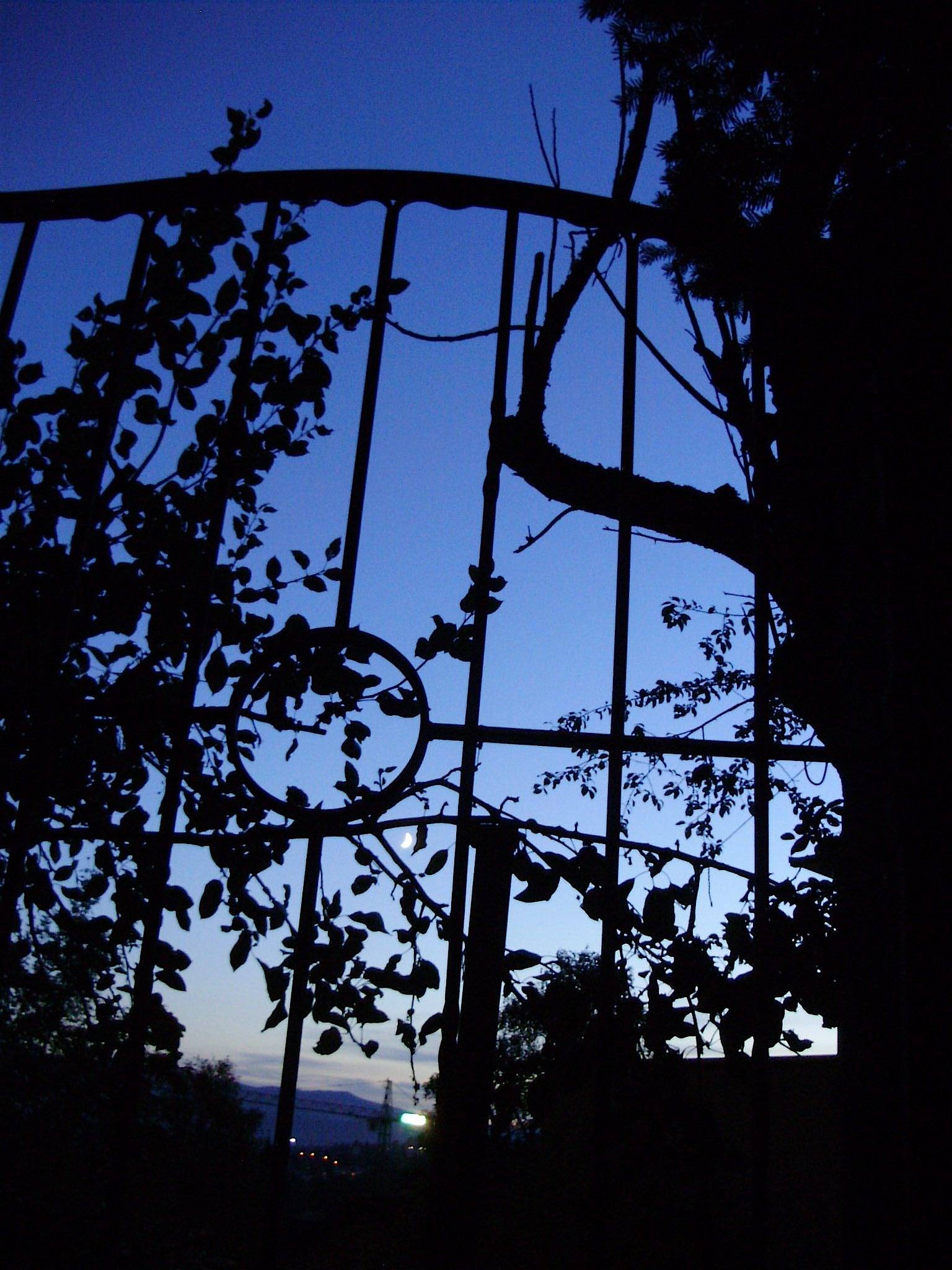
| ONE) To be precise: the writer Martin Mosebach did use, within a German text, the French term »heure bleue«. And what is fascinating about this phenomenon is that we have to deal with something that must have been in existence since the creation of day and night – and still it is something that has to be perceived and to be named by people (in French or in whatever language) that are children of their time, and as such the »heure bleue« is obviously also a cultural product, whose history, however, awaits to be written as such (while the physical phenomenon might have been already satisfactorily explained, if only in the 20th century). And if it is a cultural product of modern times, not known to Renaissance men (since Renaissance men were possibly not interested to perceive and to name the phenomenon, or to think about it), remains to be clarified. We are not going to write that history, as we are writing onto a blue background (picture: Wladyslaw), knowing that it is a blue hour sky above the Dreiländerbrücke at Weil (Friedlingen) nearby Basel, and knowing also that the very phenomenon of the blue hour is not least associated with photography, and also with electric light. Because photographers know that pictures taken at this particular time, when the sun has sunken beneath the horizon, or has not yet come up, allow to combine artificial lights and a deep blue sky, and that the combination of yellows, oranges and deep blue can make such pictures remarkably colorful.  |
| TWO) I don’t know if the very term ›blue hour‹ actually makes sense in relation to the picture by Titian. Because I am not certain at all if a rational approach, here, makes sense at all. What if the rationality that helped to create this picture aims at stepping back, disguise itself and have the poetic and visionary take over? In other words: what if a Renaissance painting, despite its inherent rationality, would still demand a mystical approach of its beholder, and what if the art historical approach of deciphering meaning and identifying representational strategies (like for example the allegedly deliberate approach of rendering a ›blue hour‹ atmosphere) is completely mistaken, or at least would only serve to help us to some degree to emulate a Renaissance mentality, that, all the same, does not require the rational approach, at least not in the first place, but a having us sink into the contemplation of the notion of love in its various dimensions? (Or did Renaissance people demand to be presented with art historical exams as wedding gifts?) What if the allegedly hyper-rational Giovanni Morelli was right in calling the landscape background »the most poetic landscape background that one only could dream of« (Morelli 1890, p. 310)? What if the whole scenery is not to be thought as a rendering of nature but as a dreaming of nature, including men’s place within nature and as nature (that dreams of itself within nature)? And what if the calling of the allegedly hyper-rational Leonardo da Vinci as a witness would not help us either? »O, grim-looked night! O, night with hue so black! O night, which ever art when day is not! O night, O night! Alack, alack, alack, (…).« W. Shakespeare, A Midsummer Night’s Dream |
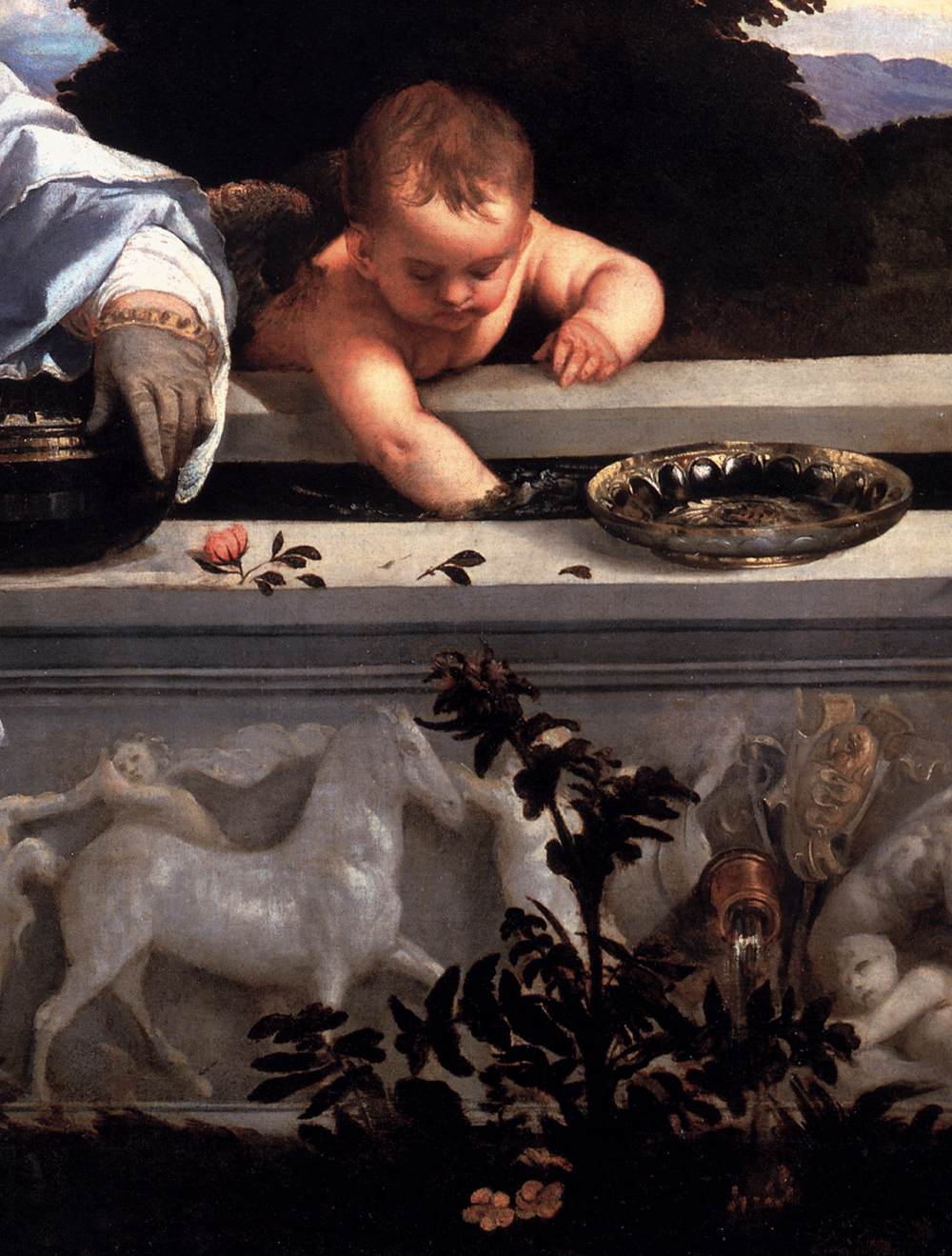 |
 (Picture: DS) THREE) Still, I believe, that it makes sense to call Leonardo as a witness. Not as a mystical beholder of a Renaissance painting by Titian though, but, with all due respect, as the living encyclopedia of Renaissance mentality. Which means that a glimpse into Leonardo’s notes, that seem to cover almost every phenomenon that one might think of, might possibly help us also to at least understand, despite the gap of a 500 years of change in human mentality, how a particular phenomenon could be seen (or, respectively, not seen) at about the times of early Titian, and at the times without electric light (that, nonetheless, were times with artificial light, and also times, as it were, not without poetic light). A brief tour into Leonardo’s notes is always helpful, even if in the end it would turn out, that Leonardo, all in all, knew nothing of a phenomenon called the ›blue hour‹ (or ›ora blu‹), and even if in the end we would only know that there is a gap also in Renaissance culture, and also in Leonardo, between the merely rational and scholarly approach to things and the poetic and artistic approach, and that these two languages do not translate into each other without one’s being lost in translation. |
| FOUR) Can we spare us to speak about the sfumato notion here? No, we can’t, but we spare it for the end. In that we enter the world of Leonardo’s notes again, a zone of twilight of its own kind, we face (once more) what I would like to call the Leonardo paradox: About the things that Leonardo da Vinci has become famous for, immersing objects and persons into mysterious atmospheres, a mysterious smile, a smooth modelling of contours, in brief: phenomena of transition (as twilight is a phenomenon of transition) – he does hardly speak about. At least not very explicitly. And once again one might be tempted to ask: Did he remain silent about the really important things? Or have the really important notes not come down to us? In section 467 of his Treatise on Painting Leonardo discusses a phenomenon that could be associated with the notion of the blue hour. He speaks about blue shadows, seen at a time of day, when the sun has sunk, and the shadow (that is not »seen« by the sun, though is »seen« by the sky, appears therefore to be blue). Leonardo also quite often speaks of smoke phenomena, of blue smoke, for example, and he does speak once, rather extensively, of how a landscape does look at break of day. All in all: if we imagine Leonardo looking at Titian’s painting, we can easily imagine him as looking at various details, the incense pot for example, i.e. the smoke, seen against the sky, and these king of phenomena Leonardo da Vinci, judging by his notes, was obviously obsessed with. But still it appears as if his notes keep us, in some sense, away of addressing actual artistic, poetic strategies and away of actual artistic questions, as for example: Why render phenomena of transition? To what purpose? In what context? In what relation, yes, to spiritual things? And in relation to the work by Titian: Why showing one woman twice (or why using one and the same model for two different roles; and what roles)? And if we look for answers to such kind of questions in Leonardo’s notes, these notes are rather disappointing (but, surely, one might develop any mysticism out of his natural philosophy, out of his ›point‹, but still, one has to built this bridge oneself, a bridge to the effects that, actually, works of Leonardo have had in terms of affecting inumerable beholders over many centuries. And Leonardos notes do not translate into what his works of art have been for its beholders. Yet the Leonardo paradox may resolve if we think about the following: in spite of any cult of genius – as soon as the genius operates in service of a mystical Catholicism, any rationality inherent to a work of art does function within that context. In other words: a mystical Catholicism is the author of Leonardo’s religious works as it is Leonardo himself. And what Leonardo has been to the world is Leonardo’s achievement, plus a Renaissance Catholicism, plus what the response to Leonardo, in any century has made out of this conglomerate. And even if we think Leonardo as a hyper-rational person (which he probably was not), any rationality that also speaks out of his notes on painting has to be seen in context because it does work in context (and people are free what to do with their experiences, instigated by a work by Leonardo). But about this context, and about what a work of art actually is for a beholder (and for himself as a beholder) Leonardo himself remains, to put it mildly, rather reserved. It’s as he seems to accept that what interests him (the explanation for blue smoke, for example; and the lessons to be taken as to the representation of atmospheric phenomena) works in a context (that may interest him or not), and what people do with the result, is up to them. 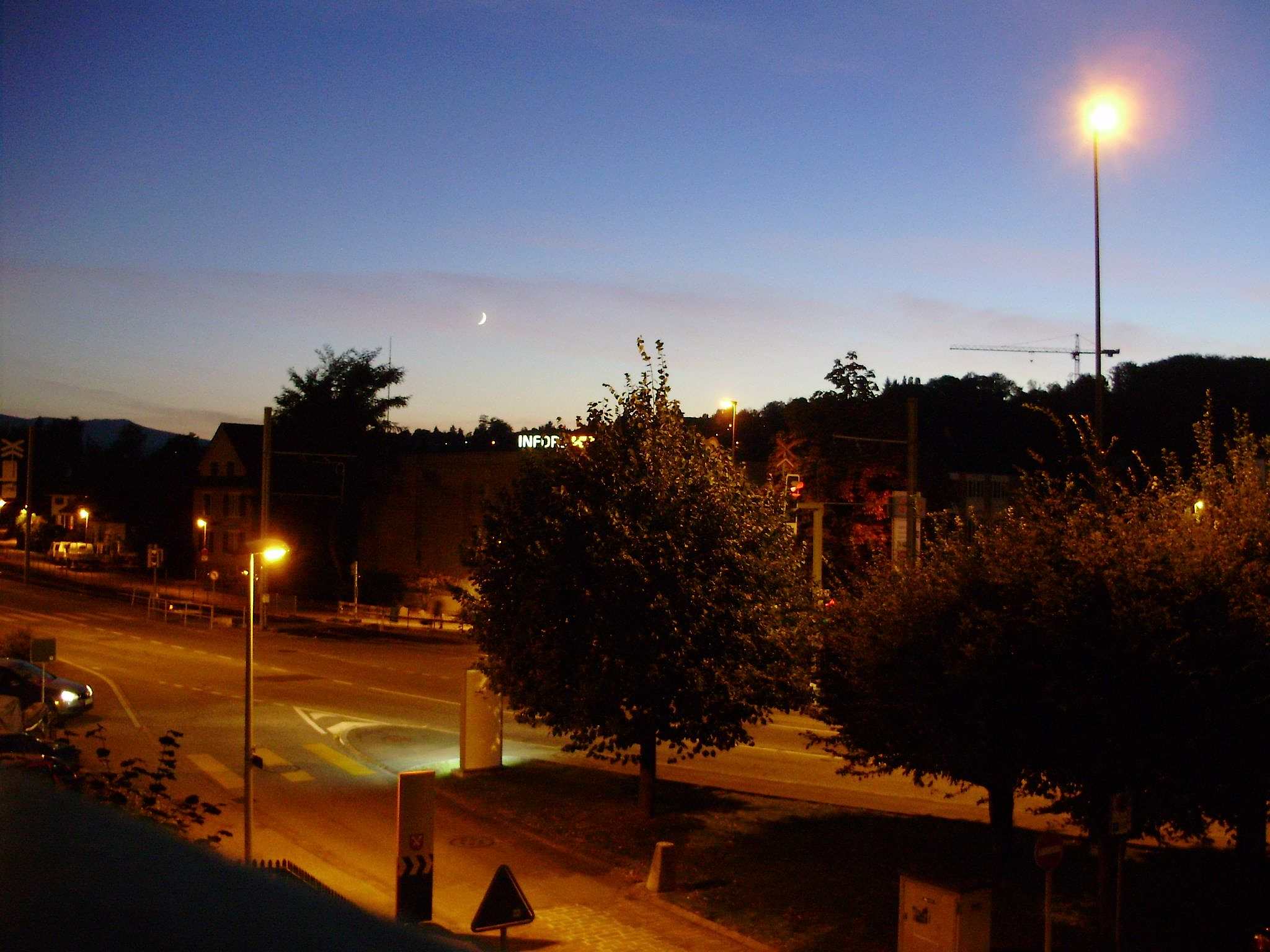 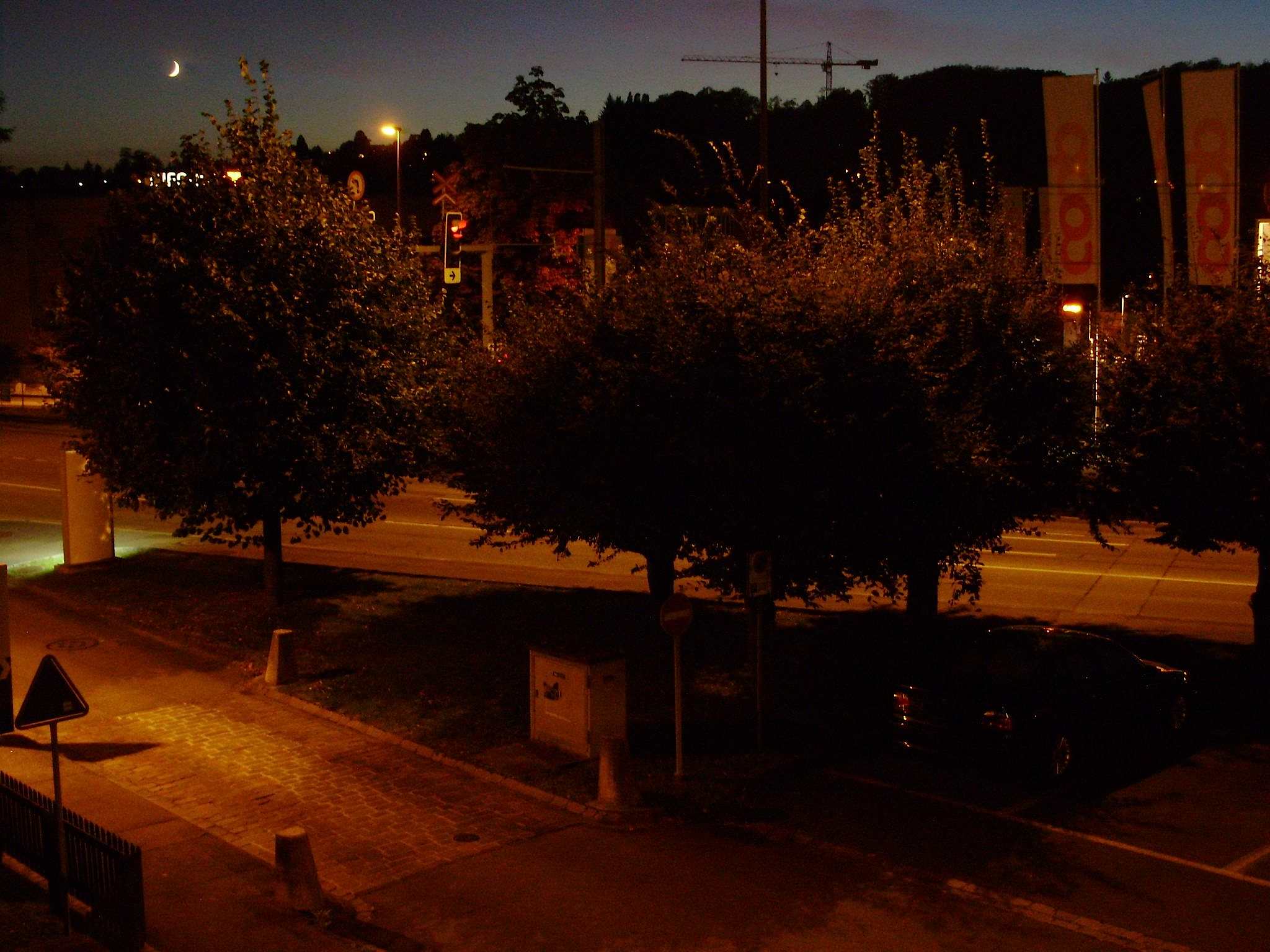 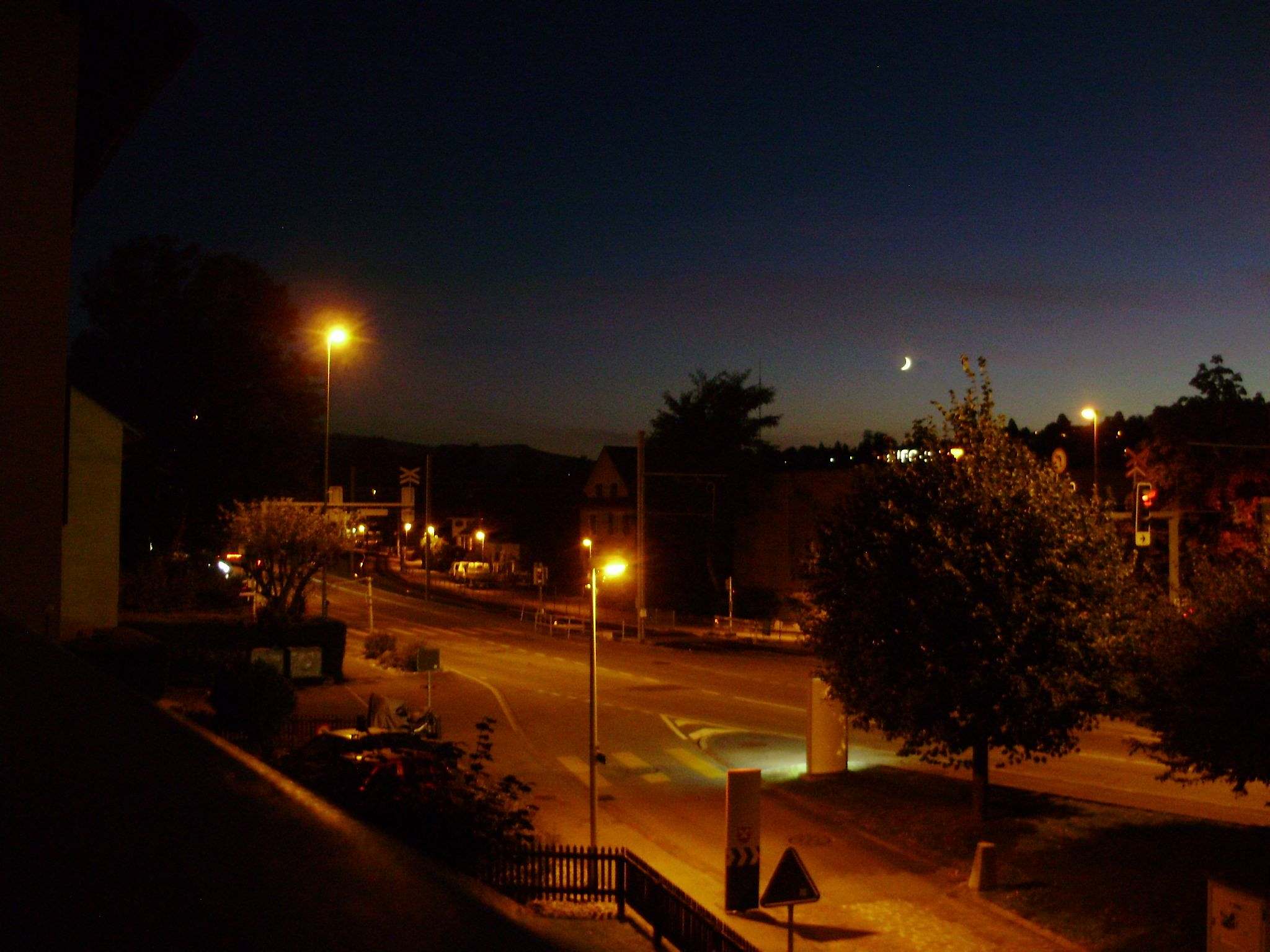 (Pictures: DS) |
| »Trip away. Make no stay. Meet me all by break of day.« W. Shakespeare, A Midsummer Night’s Dream  (Picture: wallpaperhi.com; background picture: DS) FIVE) And finally as to the sfumato notion: This notion, interestingly, is a phenomenon of the Leonardo reception, as, one may say now, the blue hour notion is now a phenomenon of the Titian reception. It is not a notion that Leonardo did invent nor did he use it, even if we give him credit to have invented what the notion is referring to: a smooth modelling of contours, a smokey effect. But if Leonardo, in his notes, does speak of smoke – this refers to actual smoke. While the notion of sfumato describes what some works by Leonardo do confront us with. And if we consider the sfumato as one signature element of Leonardo’s style, we have to admit that what Leonardo does in his art has been named by someone else, which is: one does not find everything Leonardo does or thinks about in Leonardo’s notes that, all in all, do not show him as being especially interested in the phenomenon of twilight, even if we find, for example, that the Virgin of the Rocks does confront us with a mysterious twilight that has inspired, in the 20th century, for example the writer J.G. Ballard (http://en.wikipedia.org/wiki/J._G._Ballard), whose short story The Gioconda of the Twilight Noon had to be considered in a future cultural history of twilight, and of the blue hour, respectively. |
MICROSTORY OF ART ONLINE JOURNAL FOR ART, CONNOISSEURSHIP AND CULTURAL JOURNALISM  |
MICROSTORY OF ART ONLINE JOURNAL FOR ART, CONNOISSEURSHIP AND CULTURAL JOURNALISM  |
MICROSTORY OF ART ONLINE JOURNAL FOR ART, CONNOISSEURSHIP AND CULTURAL JOURNALISM  |
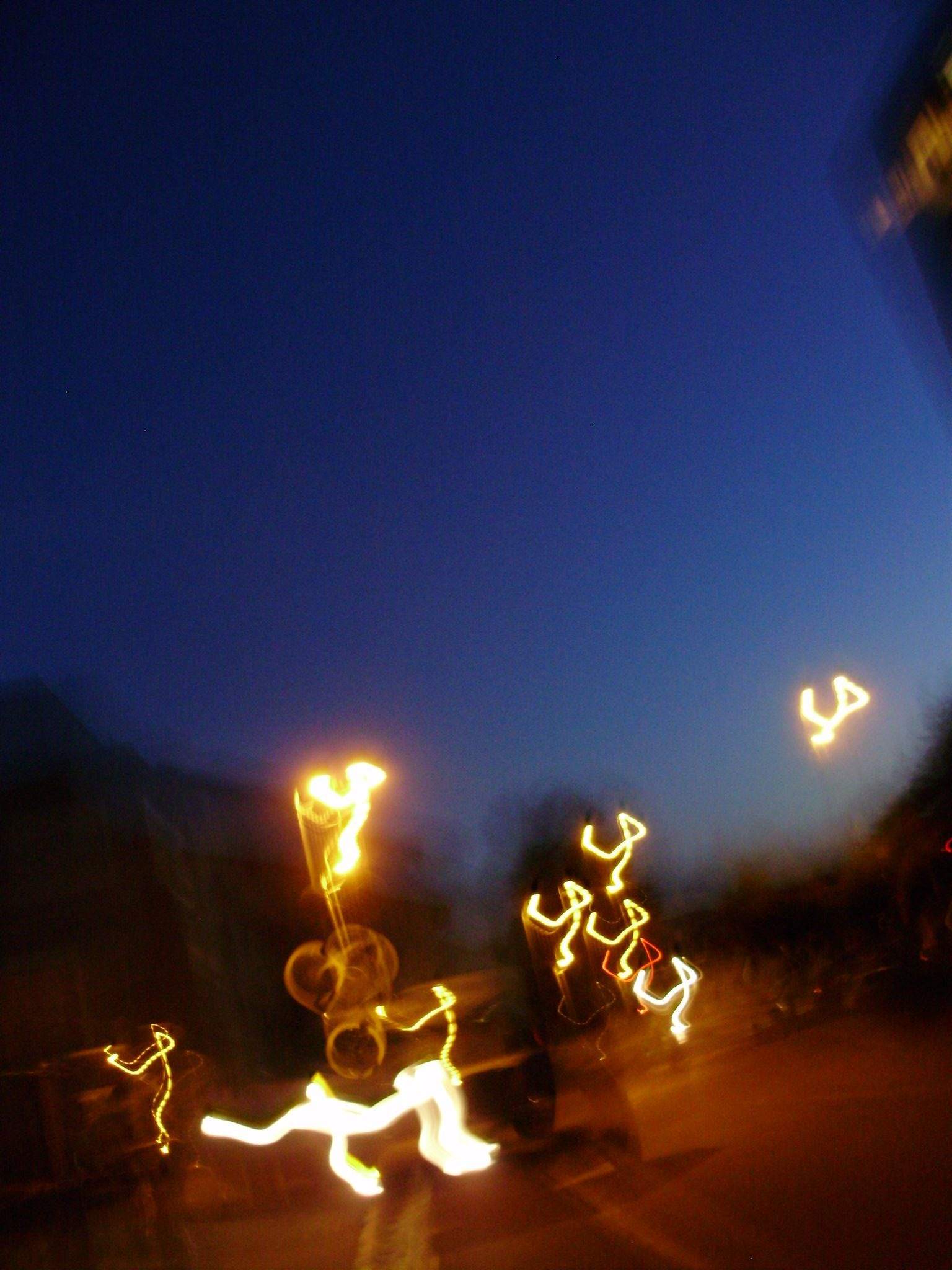
(Picture: DS)
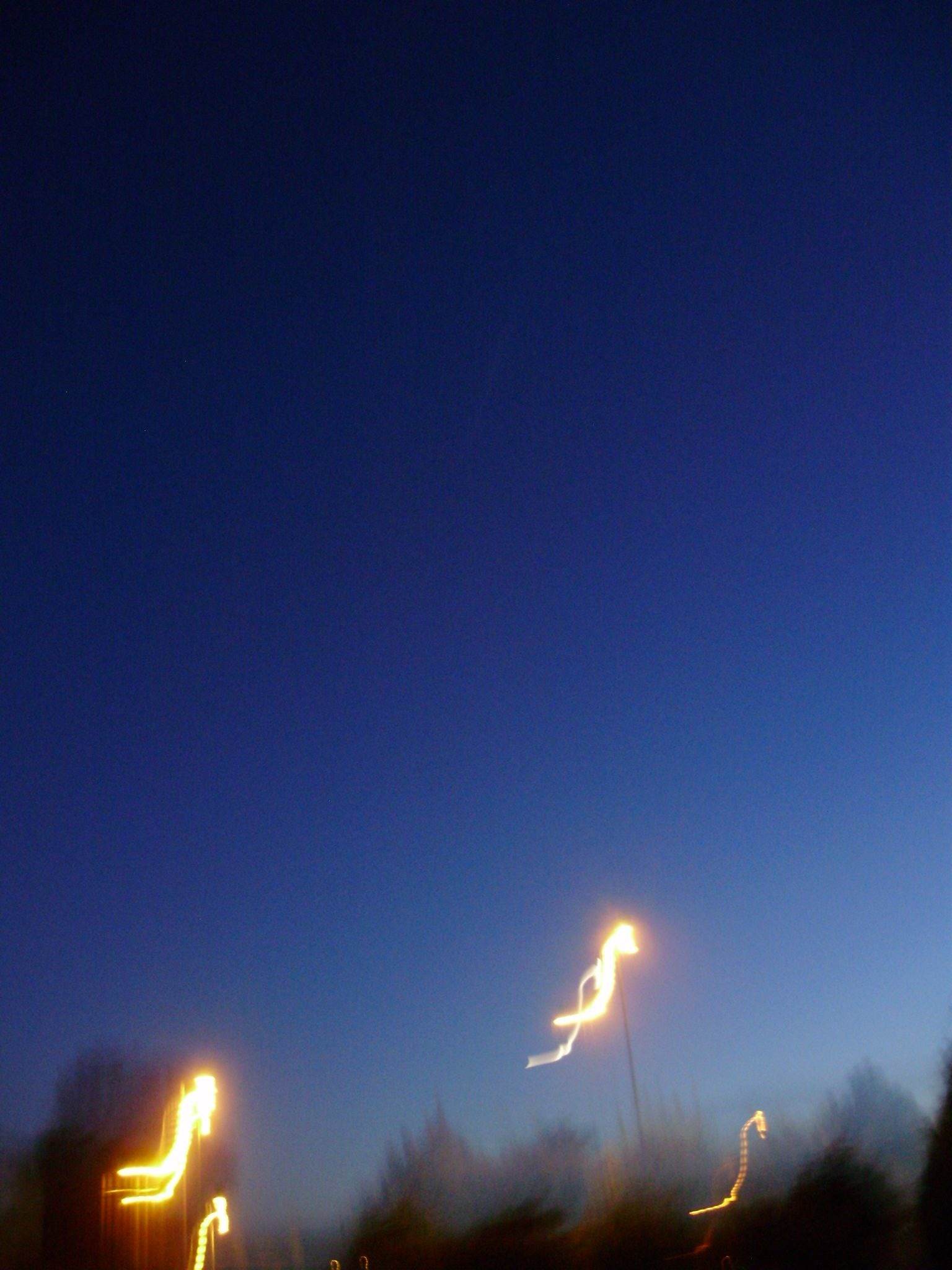
(Picture: DS)
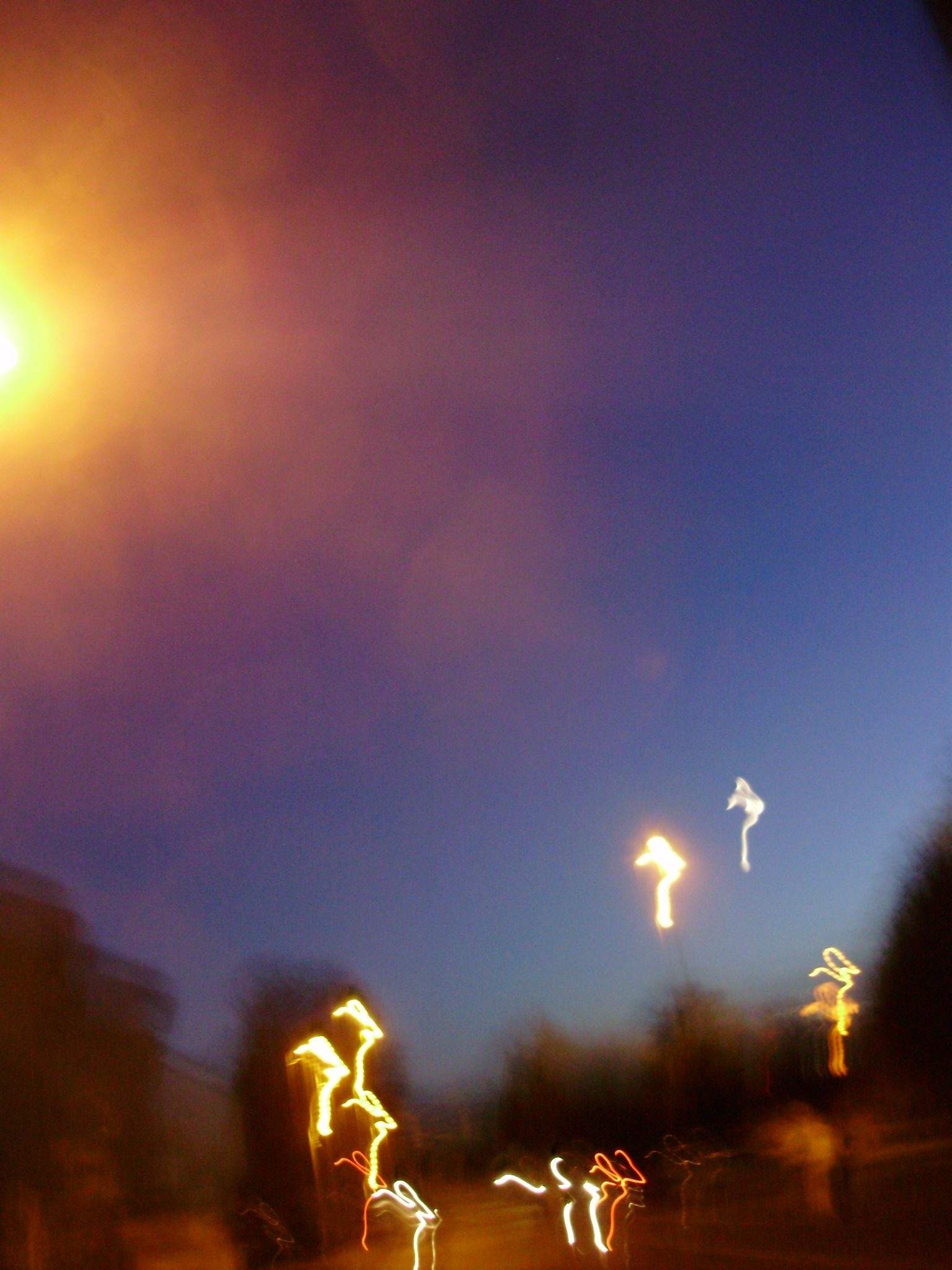
(Picture: DS)
MICROSTORY OF ART
ONLINE JOURNAL FOR ART, CONNOISSEURSHIP AND CULTURAL JOURNALISM
HOME
© DS